

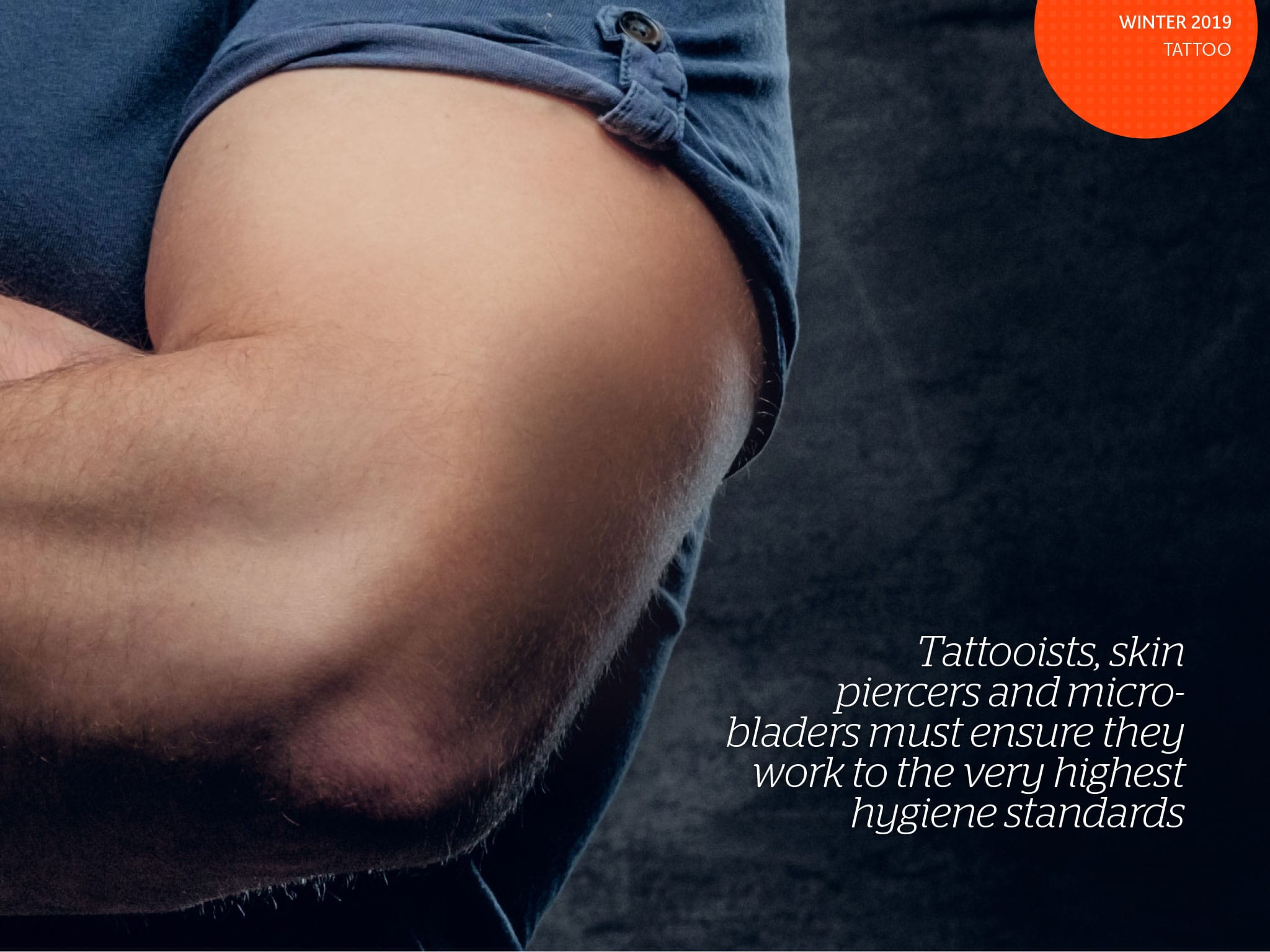
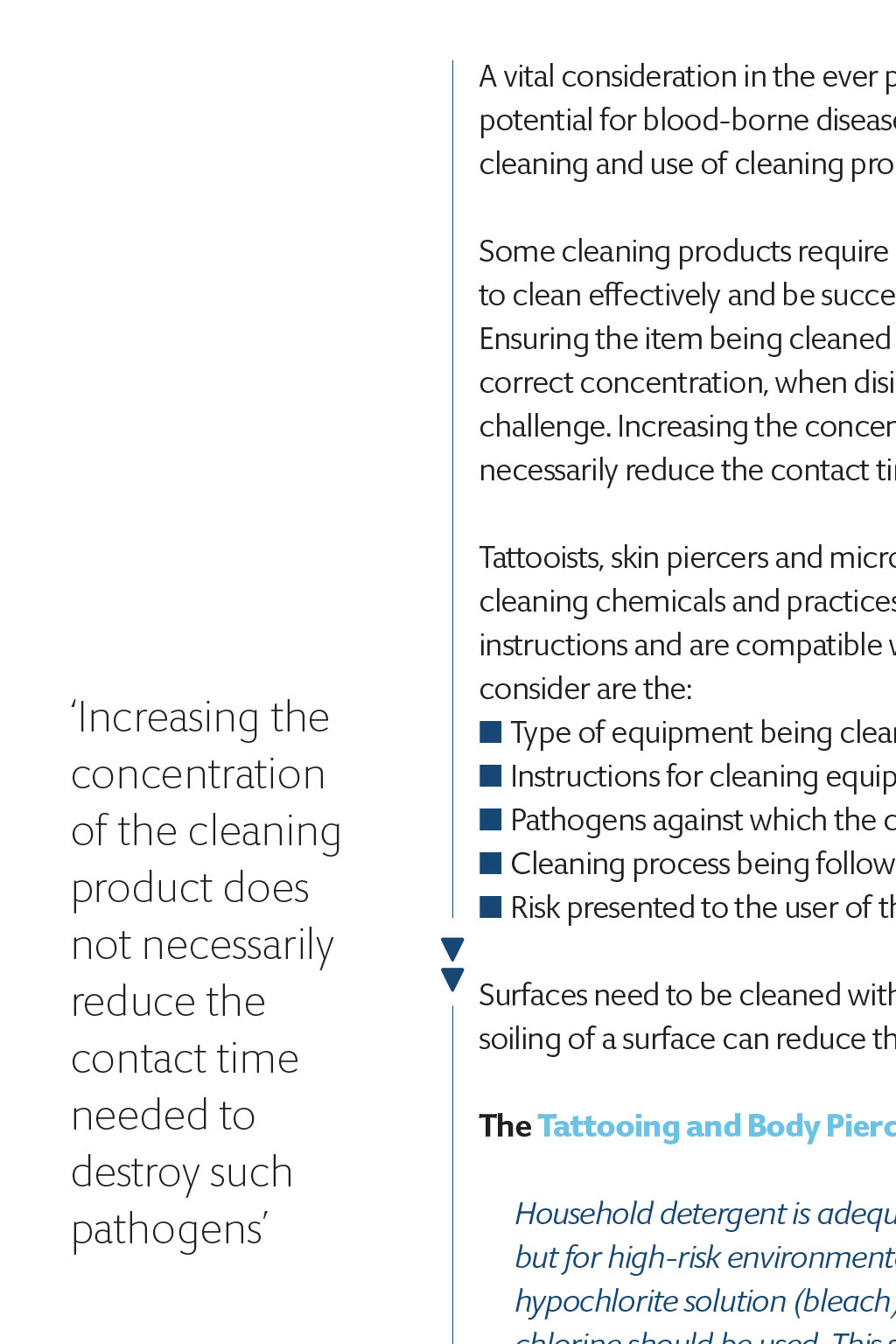
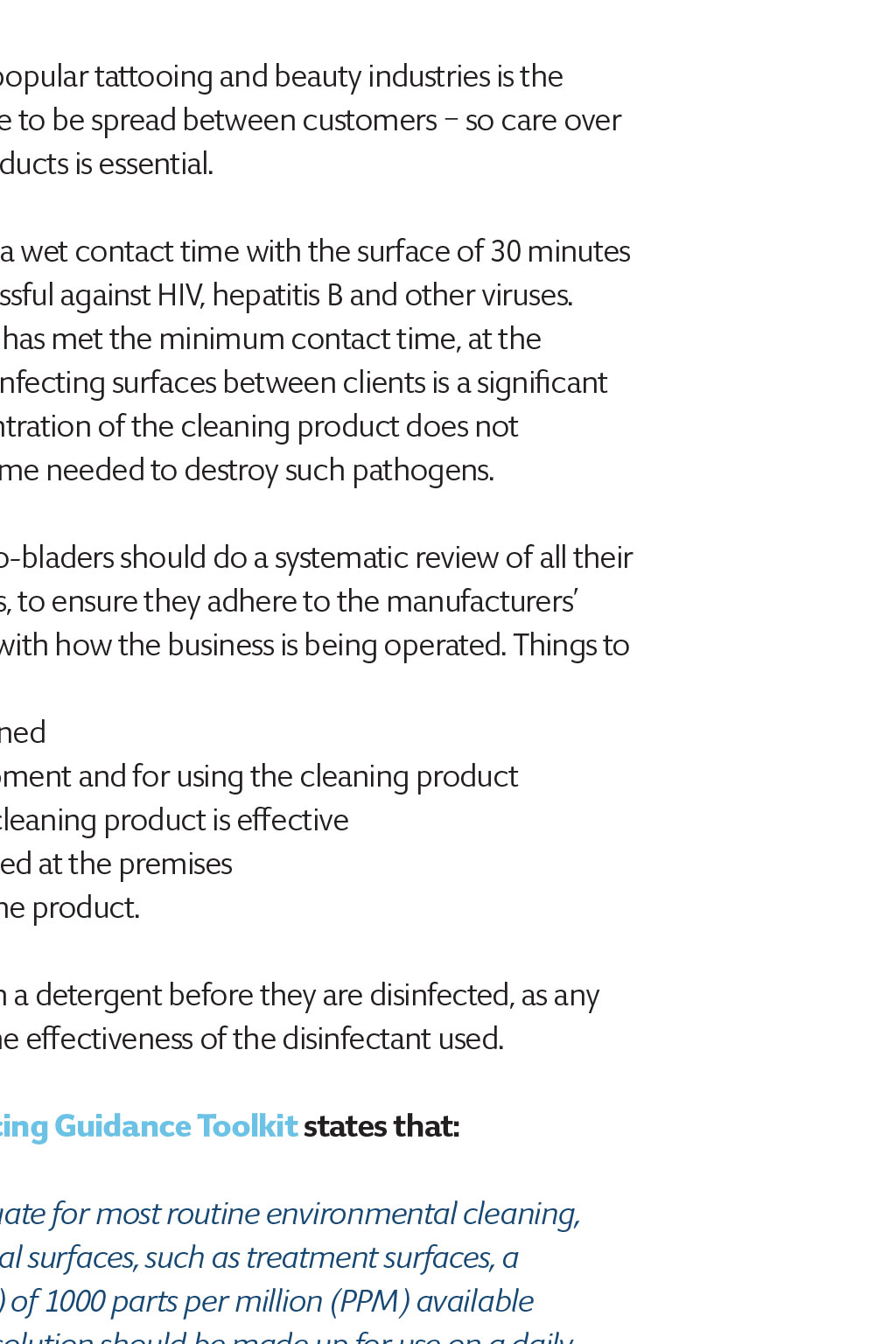
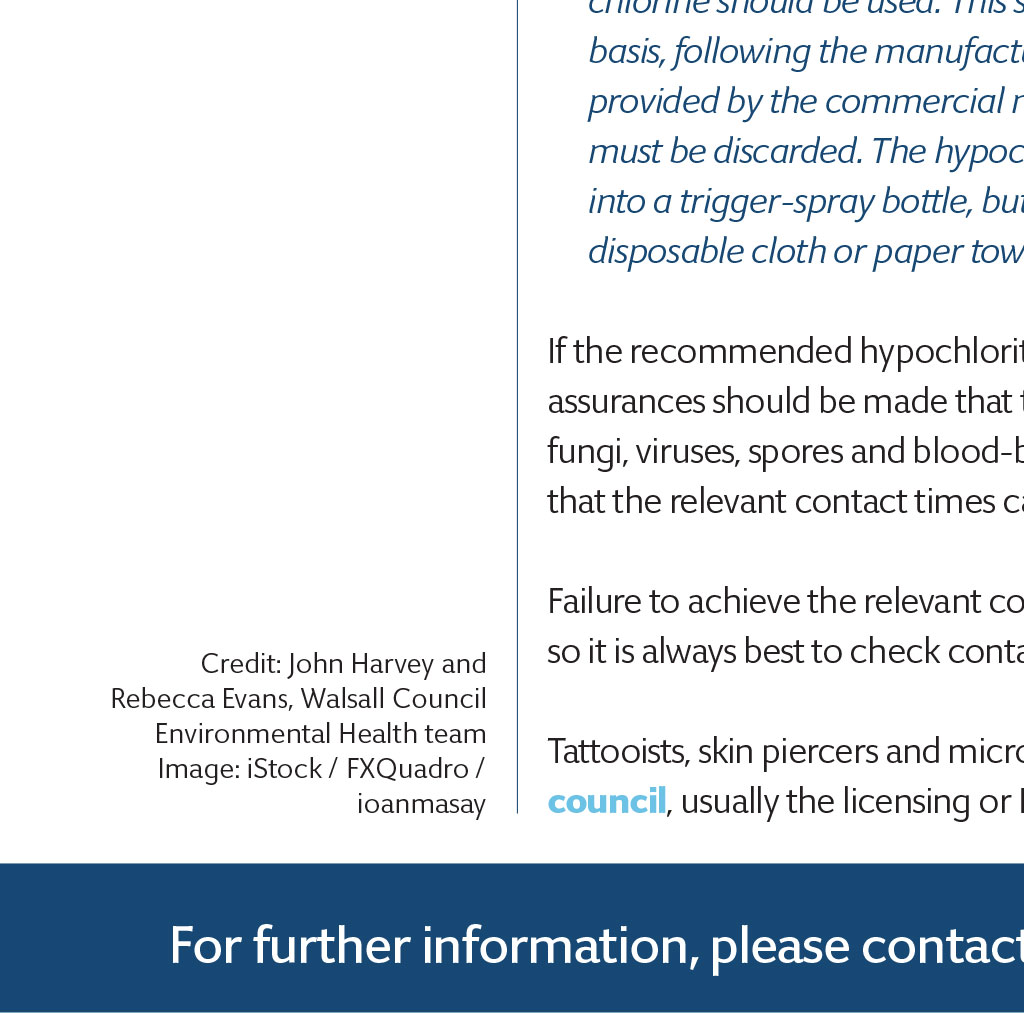
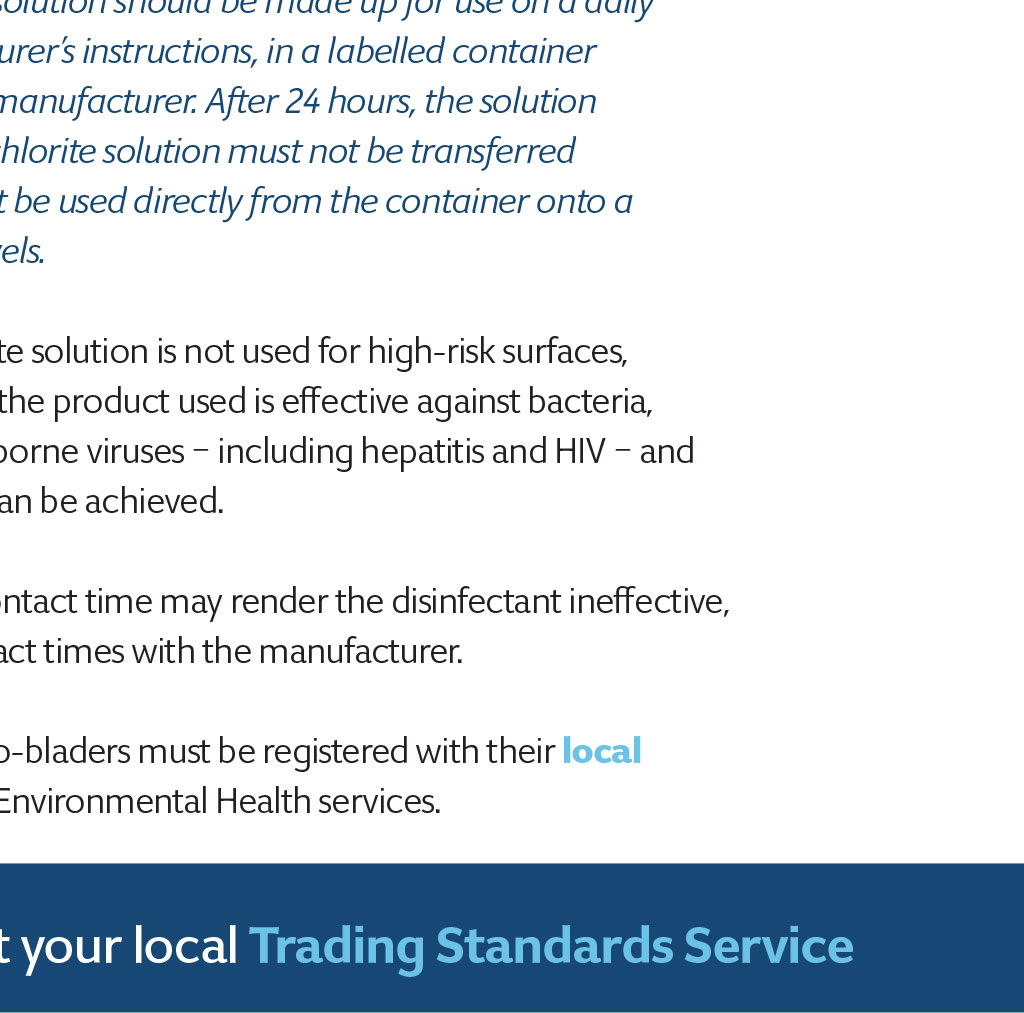







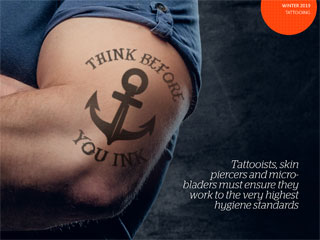
WINTER 2019 TATTOOING Tattooists, skin piercers and microbladers must ensure they work to the very highest hygiene standards A vital consideration in the ever popular tattooing and beauty industries is the potential for blood-borne disease to be spread between customers so care over cleaning and use of cleaning products is essential. Some cleaning products require a wet contact time with the surface of 30 minutes to clean effectively and be successful against HIV, hepatitis B and other viruses. Ensuring the item being cleaned has met the minimum contact time, at the correct concentration, when disinfecting surfaces between clients is a significant challenge. Increasing the concentration of the cleaning product does not necessarily reduce the contact time needed to destroy such pathogens. Increasing the concentration of the cleaning product does not necessarily reduce the contact time needed to destroy such pathogens Tattooists, skin piercers and micro-bladers should do a systematic review of all their cleaning chemicals and practices, to ensure they adhere to the manufacturers instructions and are compatible with how the business is being operated. Things to consider are the: n Type of equipment being cleaned n Instructions for cleaning equipment and for using the cleaning product n Pathogens against which the cleaning product is effective n Cleaning process being followed at the premises n Risk presented to the user of the product. Surfaces need to be cleaned with a detergent before they are disinfected, as any soiling of a surface can reduce the effectiveness of the disinfectant used. The Tattooing and Body Piercing Guidance Toolkit states that: Household detergent is adequate for most routine environmental cleaning, but for high-risk environmental surfaces, such as treatment surfaces, a hypochlorite solution (bleach) of 1000 parts per million (PPM) available chlorine should be used. This solution should be made up for use on a daily basis, following the manufacturers instructions, in a labelled container provided by the commercial manufacturer. After 24 hours, the solution must be discarded. The hypochlorite solution must not be transferred into a trigger-spray bottle, but be used directly from the container onto a disposable cloth or paper towels. If the recommended hypochlorite solution is not used for high-risk surfaces, assurances should be made that the product used is effective against bacteria, fungi, viruses, spores and blood-borne viruses including hepatitis and HIV and that the relevant contact times can be achieved. Credit: John Harvey and Rebecca Evans, Walsall Council Environmental Health team Image: iStock / FXQuadro / ioanmasay Failure to achieve the relevant contact time may render the disinfectant ineffective, so it is always best to check contact times with the manufacturer. Tattooists, skin piercers and micro-bladers must be registered with their local council, usually the licensing or Environmental Health services. For further information, please contact your local Trading Standards Service